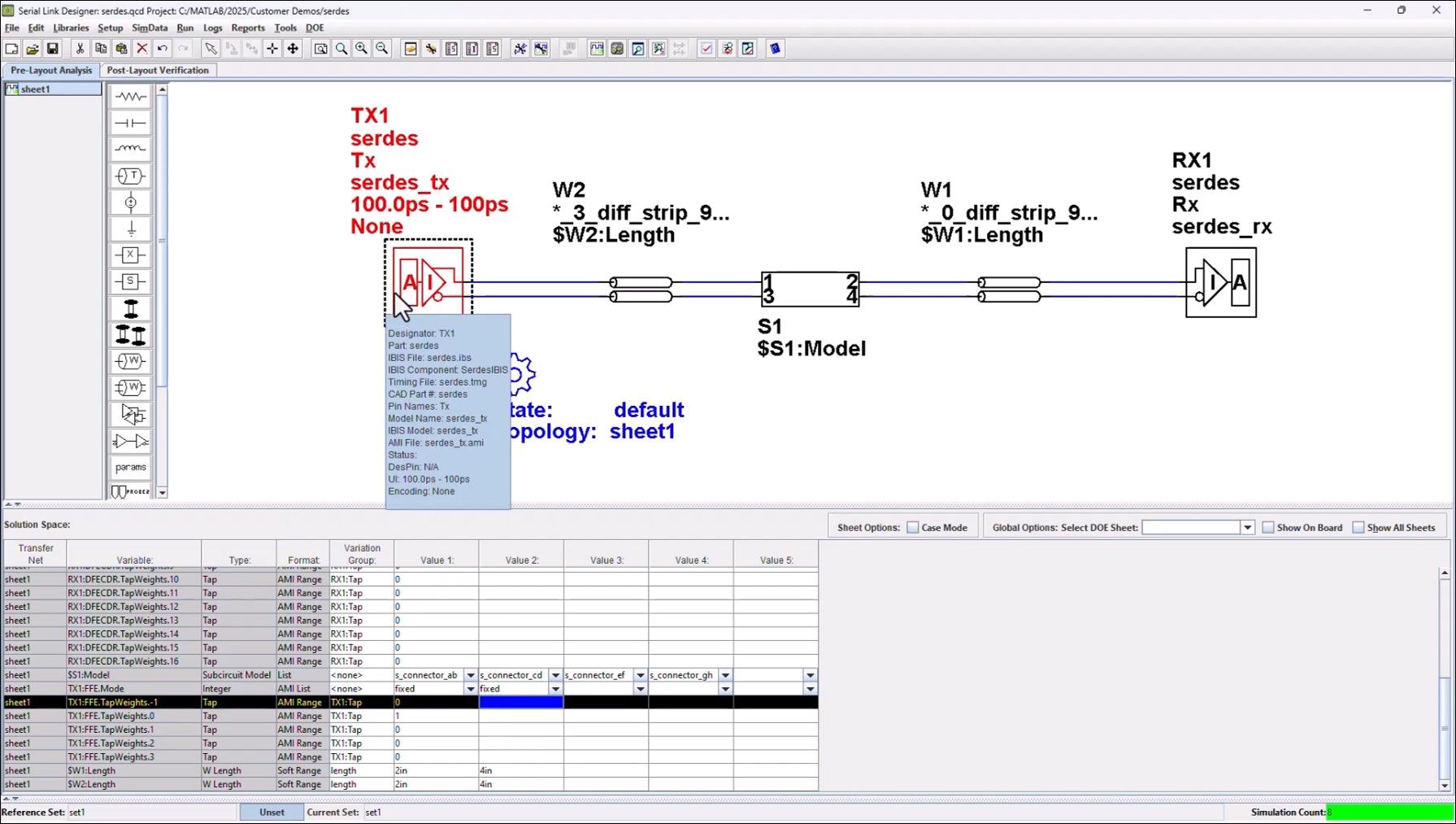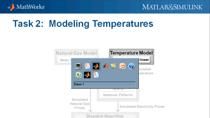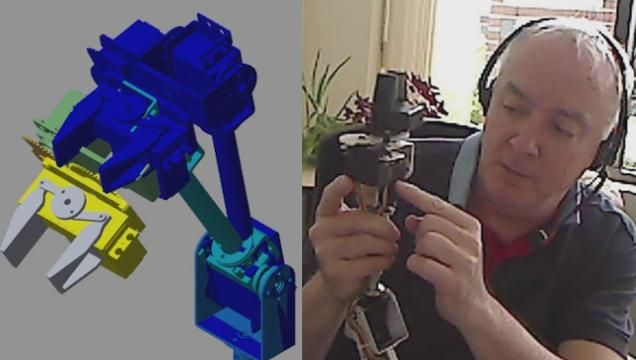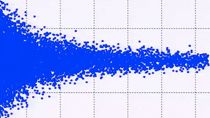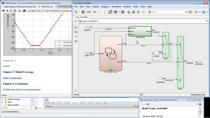Simulate SerDes Links and Generate IBIS-AMI in Simulink | Design and Analyze High-Speed SerDes Links in MATLAB, Part 2
From the series: Design and Analyze High-Speed SerDes Links in MATLAB
Simulate SerDes links in Simulink® and generate IBIS-AMI models for high-speed signal integrity analysis. Continue through the SerDes design workflow by transitioning from system-level modeling in MATLAB® to detailed time-domain simulation in Simulink. Engineers can now observe dynamic behavior, analyze jitter, and prepare models for integration with industry-standard EDA tools, like Signal Integrity Toolbox™.
Begin by exporting your SerDes system from MATLAB into Simulink, where each subsystem—transmitter, channel, and receiver—is represented as a configurable block. Perform time-domain simulations to visualize how equalizers adapt in real time and how jitter affects eye opening. This dynamic analysis complements the statistical simulations performed earlier and provides deeper insight into system performance.
Access the source code for equalization blocks such as FFE, CTLE, and DFE. This transparency allows you to inspect, modify, or replace algorithms with custom implementations, enabling advanced customization and innovation. Once the system is validated, generate IBIS-AMI models directly from Simulink. Choose from various configurations, including dual models, redrivers, retimers, and Linux®-compatible source code for cross-platform deployment.
This workflow bridges the gap between design and verification, allowing engineers to move seamlessly from concept to compliance. Whether you’re building custom SerDes IP or preparing models for third-party simulation environments, this approach ensures accuracy, flexibility, and efficiency.
Published: 11 Sep 2025
